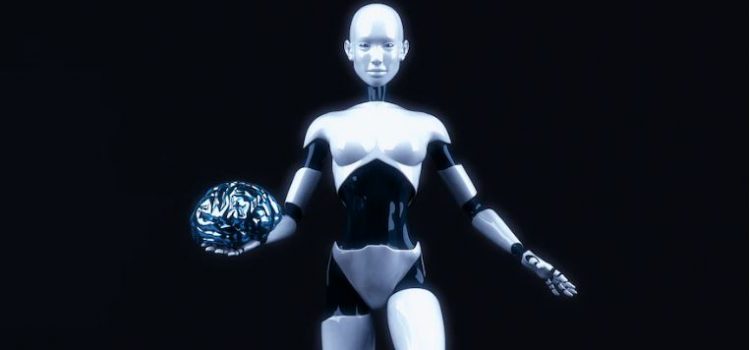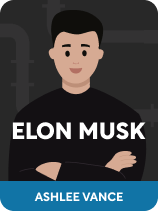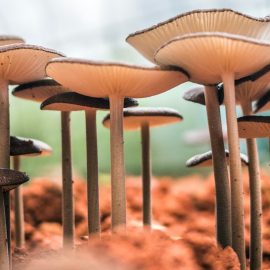

This article is an excerpt from the Shortform book guide to "Elon Musk" by Ashlee Vance. Shortform has the world's best summaries and analyses of books you should be reading.
Like this article? Sign up for a free trial here.
What’s Elon Musk doing in the field of artificial intelligence? What’s next for SpaceX?
Biographer Walter Isaacson details the companies under Elon Musk that are working hard to constantly push technology forward. Isaacson contends that Musk still views bringing about a positive future for humanity as his primary mission in life.
Read on to learn about Elon Musk’s AI projects—specifically Neuralink and Optimus—as well as SpaceX’s Starship rocket.
Musk and the Future
Elon Musk’s AI projects and SpaceX efforts aim to achieve a positive future for humanity. To this end, his teams have been developing computer chips to enhance human brains, AI-driven robots to perform manual labor, and a spacecraft capable of taking astronauts to Mars. Let’s take a look at each of these projects.
Neuralink
In 2012, Musk began to ponder the threats represented by unchecked artificial intelligence. To keep AI aligned with human values and progress, and so it can enhance us rather than replace us, Musk created Neuralink, a company to research and design computer chips to directly connect the human mind to computers. Isaacson explains that the immediate benefits would be to help people with neurological disorders regain control of their bodies. However, Neuralink’s end goal is still to create a seamless mind-machine interface so that AI can add to human consciousness. As of 2023, thanks to its progress—such as enabling a macaque to play video games with its mind—Neuralink’s technology has been approved for human trials.
(Shortform note: As impressive as Neuralink’s accomplishments are, they aren’t the only bioscience company working toward a brain-computer interface (BCI). In 2021, Synchron Inc. received FDA approval to perform human trials ahead of Neuralink reaching that goal. In 2022, Blackrock Neurotech reported that it had reached 30,000 days of having its devices implanted in patients to research their effectiveness. In 2023, Precision Neuroscience began using BCIs to map the human brain itself. Though Musk is an active participant in this race, as Isaacson makes clear, many other businesses and researchers are working to push the technology further.)
Optimus
Another AI-based project that Musk has taken on is the Optimus project to build human-friendly robots capable of performing any physical task. Isaacson says that Musk sees such robots as a benefit to society—they could remove the drudgery of human labor, allowing people to spend their time pursuing educational and creative projects. By giving AI a physical presence, rather than disembodied language programs such as ChatGPT, Musk believes humanoid robots are a necessary step in the next level of AI development, one that will align AI’s interests with those of the physical world.
(Shortform note: As with Neuralink and brain-computer interfaces, Tesla’s Optimus is far from the only humanoid robot currently in development. Another is Hanson Robotics’ Sophia, which incorporates advances in language learning and emotional perception as well as articulated motion. Boston Dynamics’ Atlas, while deviating from a strictly human form, displays a wide range of athletic abilities and agile motion in real-world environments. Though the early Optimus models that Isaacson describes weren’t as jaw-dropping as some of Musk’s competitors, demonstrations in 2023 show great improvement in Optimus’s design, especially in terms of hand articulation and environmental perception.)
Starship
Lastly, Musk has never wanted to be stuck in only one world. Colonizing Mars has always been his highest goal, and the next step in achieving that ambition is SpaceX’s Starship rocket, a reusable spacecraft larger than the Saturn V that launched Apollo to the moon. The first Starship test flight took place in April 2023. The rocket cleared the launchpad and almost made it into space before an engine problem aborted the mission. Isaacson makes it clear that Musk and his staff didn’t see this as a failure but as a learning success. Data taken from this initial flight will be used to improve future Starship rockets, perhaps one day sending astronauts back to the moon and beyond.
(Shortform note: Isaacson illustrates that, when it comes to testing new projects, Musk prefers to try and try again as quickly as his teams can prepare them. In the case of Starship, Musk’s major hurdles are regulatory instead of technical. After the first Starship test exploded, SpaceX faced a milieu of routine evaluations by a variety of government agencies. The Federal Aviation Administration wrapped up its findings in September 2023, but the US Fish and Wildlife Service had not yet completed its review of the Starship launch’s environmental impact. Musk, of course, voiced impatience on Twitter, since the Starship itself was ready to fly.)

———End of Preview———
Like what you just read? Read the rest of the world's best book summary and analysis of Ashlee Vance's "Elon Musk" at Shortform.
Here's what you'll find in our full Elon Musk summary:
- A biography of Elon Musk by renowned biographer Walter Isaacson
- Musk's traumatic South African childhood up until his Twitter takeover
- How Musk's Asperger's syndrome affected his childhood and relationships






